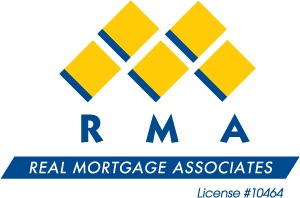Are you trying to choose between a Bloom Finance reverse mortgage and a CHIP reverse mortgage? This article compares them head-to-head on loan amounts, interest rates, fees, and more to help you make an informed decision comparing Bloom finance reverse mortgage and CHIP reverse mortgages.
It’s important to note that CHIP is a brand of reverse mortgage (a product from Home Equity Bank) not a type of reverse mortgage.
Comparing Bloom Reverse Mortgage with CHIP reverse mortgage
- Both Bloom Finance and CHIP Reverse Mortgages allow Canadian homeowners aged 55 or older to access up to 55% of their home equity without needing to sell their homes, providing tax-free cash for various needs.
- Key distinguishing factors between Bloom Finance and CHIP Reverse Mortgages include interest rates, fees, and the application process, with Bloom Finance offering a more transparent and customer-friendly approach, while CHIP guarantees borrowers will never owe more than the home’s value.
- Choosing the right reverse mortgage depends on individual financial goals and lifestyle needs, requiring a careful comparison of loan amounts, interest rates, fees, and customer satisfaction to make an informed decision.
Bloom Finance Reverse Mortgage vs CHIP Reverse Mortgage: Which is Best?
Reverse mortgages enable Canadian homeowners aged 55 or older to tap into their home equity while continuing to reside there, offering added financial flexibility without necessitating a sale or relocation. This can be a game-changer for retirees, providing a steady stream of tax-free cash to supplement their income or cover unexpected expenses, all while retaining full ownership of their homes.
In Canada’s reverse mortgage market, there are a few major players, namely HomeEquity Bank’s CHIP Reverse Mortgage and Bloom Finance. HomeEquity Bank, with its CHIP product, and Bloom Finance, both offer unique features and benefits, necessitating a close comparison. The former has dominated the market, maintaining a customer satisfaction rate of over 95%. On the other hand, Bloom Finance, a newer entrant in the market, has quickly gained traction due to its focus on transparency and customer-friendly terms.
Choosing the best reverse mortgage product depends on various factors, including:
- Loan amounts
- Interest rates
- Fees
- The overall customer experience
An examination of these elements allows for the determination of which option best aligns with your financial goals and lifestyle needs.

Retire at home. Learn if a Bloom reverse mortgage or a CHIP reverse mortgage is best for you
Introduction
Deciding on a reverse mortgage is a significant decision that requires careful consideration of all the pros and cons. Even though these financial products can offer much-needed financial relief, understanding their long-term impact on your home equity and future financial flexibility is key.
This comparison delves into the key features of Bloom Finance and CHIP Reverse Mortgages, with a focus on:
- Loan amounts
- Interest rates
- Fees
- Application process
By the end, you’ll have a comprehensive understanding of which reverse mortgage might be the best fit for your needs.
Overview of Reverse Mortgages in Canada

Keep your home while leveraging equity: an overview of reverse mortgages in Canada
Canadian homeowners aged 55 and older can access their home equity through a reverse mortgage. This allows them to do so without the requirement of selling or moving out of their homes. Understanding how a reverse mortgage works helps retirees supplement their income or cover unexpected expenses while maintaining full ownership of their homes.
A key benefit of reverse mortgages is:
- The provision of tax-free money, without the need for monthly mortgage payments, thereby enhancing financial security during retirement.
- Homeowners can turn up to 55% of the appraised value of their home equity into cash and use it for any purpose, from healthcare costs to home renovations.
- This flexibility makes reverse mortgages an attractive option for many retired homeowners.
In Canada, the main providers of reverse mortgages are HomeEquity Bank, Equitable Bank, and Bloom Finance. These lenders operate within Canada’s reverse mortgage market, offering unique features, loan structures, and customer service approaches, necessitating a careful comparison to find the best fit for your financial situation.
Bloom Finance Reverse Mortgage Explained
Bloom Finance began offering reverse mortgages in late 2021, with a focus on providing a simple and transparent process for seniors. Their reverse mortgage product allows homeowners aged 55 and older to access up to 55% of their home’s equity without requiring regular interest or principal payments. This means you can unlock the value of your home while continuing to live in it and maintaining 100% ownership.
Here is how Bloom Finance explains a reverse mortgage:
One of the standout features of Bloom Finance is its customer-centric approach. Clients can benefit from:
- Not being required to make regular payments
- Making interest payments optional
- Using the proceeds from a Bloom reverse mortgage for a variety of purposes, such as covering healthcare costs, paying off debt, or funding home renovations.
The application process is streamlined and designed to be user-friendly. Bloom Finance offers the following benefits:
- Handles necessary home appraisals
- Provides a Commitment Letter outlining the loan amount and terms upon approval
- Works with multiple lenders, including Equitable Bank, to offer competitive rates and terms.
CHIP Reverse Mortgage Explained
HomeEquity Bank’s CHIP Reverse Mortgage offers several variations to meet different financial needs in Canada. These include:
- CHIP
- CHIP Max
- CHIP Open
- Income Advantage
Each product is designed to help homeowners access cash from their home equity in a way that suits their specific circumstances.
Here’s how CHIP explains their reverse mortgage:
Key features of the CHIP Reverse Mortgage is:
- The guarantee that borrowers will never owe more than the value of their home, even if property values decrease.
- Homeowners can qualify for up to 55% of the appraised value of their home.
- The funds received can be either as a lump sum or through regular monthly deposits, providing a steady stream of tax-free income.
- This flexibility can be particularly useful for managing retirement expenses.
The application process for a CHIP Reverse Mortgage includes an eligibility check and a professional home appraisal, similar to other reverse mortgage products. HomeEquity Bank requires a minimum home value of $200,000 for its CHIP and Income Advantage products, ensuring that the reverse mortgage is a viable option for homeowners with substantial property value.
Learn about the pros and cons of CHIP reverse mortgages here.
Key Differences Between Bloom Finance and CHIP Reverse Mortgages
Several factors should be considered when deciding between Bloom Finance and CHIP Reverse Mortgages, including:
- Loan amounts
- Interest rates
- Fees
- Application process
These differences can significantly impact your financial planning and overall satisfaction with the reverse mortgage. Working with a licensed reverse mortgage broker from Canada Reverse Mortgage Centre can help you evaluate the differences and determine which is best for your retirement.
Loan Amounts and Limits
Homeowners can unlock up to 55% of their home equity with both Bloom Finance and CHIP Reverse Mortgages. This implies that a significant portion of your home’s value can be accessed in tax-free cash, regardless of whether you choose Bloom or CHIP.
While the maximum loan amounts are similar, the structure of how these funds can be accessed may vary slightly. CHIP offers different products like CHIP Max and Income Advantage, which provide options for accessing larger portions of equity or receiving regular income payments. This flexibility can be advantageous depending on your financial needs and goals.
Interest Rates and Fees
When choosing a reverse mortgage, interest rates and fees are critical considerations. Bloom Finance charges around $2,300 in fees for processing, appraisal, and independent legal advice. Their interest rates for a 5-year fixed term are approximately 6.94%, which is competitive within the market.
On the other hand, HomeEquity Bank’s CHIP Reverse Mortgage has higher interest rates, with a 5-year fixed term rate around 8.59%. While these rates are higher, CHIP offers the guarantee that borrowers will never owe more than the value of their home, which can provide peace of mind.
Both options involve various fees, including home appraisal, closing costs, and independent legal advice. It’s important to weigh these costs against the benefits offered by each provider to determine which is more cost-effective for your situation.
Application Process
The application process for a Bloom Finance Reverse Mortgage is designed to be simple and straightforward. It starts with an online estimate, followed by an eligibility check and a professional home appraisal. Bloom Finance handles the appraisal and covers the upfront costs, making the process easier for applicants.
Similarly, the CHIP Reverse Mortgage application process involves completing an estimate on the lender’s website, followed by an eligibility check and home appraisal. Both lenders require independent legal advice to ensure that borrowers fully understand the terms and conditions of the reverse mortgage.
Once the legal review is complete, funds can be disbursed as a lump sum, regular payments, or a combination of both, providing flexibility in how you receive your money.
Eligibility Criteria for Bloom Finance vs CHIP Reverse Mortgage
Both Bloom Finance and CHIP Reverse Mortgages have similar eligibility criteria, requiring homeowners to be at least 55 years old,. This age requirement ensures that the product is targeted towards retirees and those nearing retirement.
Property value is another key factor. To qualify for a Bloom Finance reverse mortgage, the home must be valued at least $250,000 and serve as the primary residence,. CHIP Reverse Mortgages have a slightly lower minimum home value requirement of $200,000, making it potentially more accessible to a wider range of homeowners.
How to Choose the Right Reverse Mortgage Lender
Choosing the right reverse mortgage lender can significantly impact your financial future and overall satisfaction with the product. One of the most important factors to consider is the lender’s reputation and the quality of customer service they provide. A lender with a solid track record and high customer satisfaction ratings can offer peace of mind and a smoother experience.
Working with a mortgage broker can also be beneficial, especially if you are new to reverse mortgages. Mortgage brokers can help you compare different lenders and loan options, saving you time and effort. Moreover, there is no extra cost to the borrower for using a broker, as the lender pays the broker’s fees.
The comparison of specific features, interest rates, and fees of each option is crucial when selecting a reverse mortgage lender. Look for transparency in terms and conditions, and ensure that the lender provides clear and comprehensive information to help you make an informed decision.
Benefits of Choosing Bloom Finance Reverse Mortgage

Keep your home through retirement with a reverse mortgage
One of the primary benefits of choosing a Bloom Finance Reverse Mortgage is:
- the ability to maintain 100% ownership of your home while accessing its equity
- continue living in your home without the pressure of making regular mortgage payments, as making interest payments is optional
- this flexibility can be particularly advantageous for those on a fixed income.
Bloom Finance offers transparent rates and fees with no hidden charges, making it easier for homeowners to understand the cost structure. Additionally, the proceeds from a Bloom reverse mortgage can be used for various purposes, such as covering healthcare costs, paying off debt, or funding home renovations, providing significant financial freedom.
Another benefit is the light income requirements, which make it easier for more retirees to qualify for a Bloom Finance reverse mortgage. This inclusive approach ensures that a broader range of homeowners can access the financial support they need during retirement.
Benefits of Choosing CHIP Reverse Mortgage
The CHIP Reverse Mortgage offers several unique benefits, making it a popular choice among Canadian retirees. One of the most significant advantages is that the money received from a CHIP Reverse Mortgage is tax-free and does not affect Old Age Security (OAS) or Guaranteed Income Supplement (GIS) benefits. This ensures that your overall retirement income remains intact.
Another key advantage is the flexibility in repayment. No payments are required while the homeowner or their spouse lives in the home; repayment is only required upon sale or relocation. This structure allows homeowners to stay in their homes and use the funds as they see fit, providing financial stability without the burden of monthly payments.
Homeowners maintain ownership and control of their home with a CHIP Reverse Mortgage, and on average, 99 out of 100 homeowners have equity remaining in their home after the reverse mortgage is repaid. This high level of customer satisfaction highlights the trust and reliability associated with the CHIP Reverse Mortgage.
Potential Drawbacks of Each Option
Despite the many benefits of reverse mortgages, some potential drawbacks warrant consideration. One of the primary concerns is the reduction in home equity, which can impact the inheritance left to your family. As the loan balance increases over time due to accrued interest, the remaining equity in your home decreases.
Another drawback is that taking out a reverse mortgage may limit other financing options secured by your home, such as a Home Equity Line of Credit (HELOC) or similar products. This could reduce your financial flexibility in the future.
Additionally, failing to comply with loan terms, such as paying property taxes or maintaining the home, can lead to early repayment or default. It’s essential to understand these obligations and ensure you can meet them to avoid any negative consequences.
Learn about the facts and myths of Canada reverse mortgages in this article.
Real-Life Examples and Testimonials
John and Mary, a retired couple, chose a CHIP Reverse Mortgage to supplement their income and fund their travel plans. They were impressed with the flexibility and customer service provided by HomeEquity Bank, which made their retirement dreams possible.
David, a senior homeowner, used the CHIP Reverse Mortgage to pay off his existing mortgage and cover medical bills. He appreciated the seamless application process and the transparency offered by HomeEquity Bank. This allowed him to manage his expenses without worrying about monthly payments.
Margaret, a widow, opted for a Bloom Finance Reverse Mortgage instead of a traditional mortgage for financial security. She found the application process straightforward and was pleased with the timely disbursement of funds. This gave her the peace of mind to enjoy her retirement without financial stress.
Summary
Both Bloom Finance and CHIP Reverse Mortgages offer valuable solutions for Canadian homeowners looking to unlock their home equity. Bloom Finance provides lower interest rates, personalized customer service, and flexible payment options, making it an attractive choice for many retirees. On the other hand, CHIP Reverse Mortgages offer tax-free income, repayment flexibility, and high customer satisfaction, making it a reliable option for financial stability.
Ultimately, the best choice depends on your individual financial needs and preferences. By carefully considering the features, benefits, and potential drawbacks of each option, you can make an informed decision that enhances your retirement years and provides the financial support you need.
Frequently Asked Questions
What is a reverse mortgage, and how does it work?
A reverse mortgage allows homeowners aged 55 or older to access their home equity without selling or moving out. The loan provides tax-free cash and does not require monthly mortgage payments until the home is sold or the homeowner relocates. This can provide financial flexibility for older homeowners. Check our Complete Guide To Reverse Mortgages in Canada for full details.
What are the benefits of a reverse mortgage?
A reverse mortgage provides benefits such as accessing tax-free cash, maintaining home ownership, and avoiding monthly mortgage payments, which can offer financial stability and flexibility during retirement. Some people also consider a Home Equity Line of Credit (HELOC) so we’ve compared HELOC and Reverse Mortgages here.
How do Bloom Finance and CHIP Reverse Mortgages differ?
Bloom Finance offers lower interest rates, transparent fees, and flexible payment options, while CHIP Reverse Mortgages provide tax-free income, repayment flexibility, and a guarantee that borrowers won’t owe more than the value of their home. Both options have their own unique benefits to consider.
What are the eligibility criteria for these reverse mortgages?
To be eligible for both Bloom Finance and CHIP Reverse Mortgages, you must be at least 55 years old. Additionally, Bloom Finance requires a minimum property value of $250,000, and CHIP Reverse Mortgages require a minimum home value of $200,000. There are some differences between reverse mortgages in Canada and the United States. Get all of the details on how reverse mortgages work in Canada.
How can I choose the right reverse mortgage lender?
When choosing a reverse mortgage lender, consider factors such as reputation, customer service, transparency, and working with a mortgage broker to compare options. This will help you find the best fit for your needs. Work with a broker at Canada Reverse Mortgage Centre to evaluate your options and determine which is best for your retirement. Complete the form below to get started.









